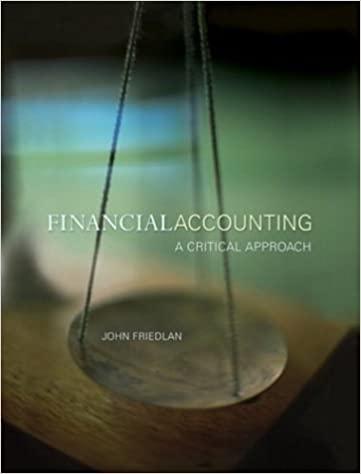Answered step by step
Verified Expert Solution
Question
1 Approved Answer
The crimes are solved by Forensics Offices ( FOs ) in San Marcos. An FO works on a crime until it is solved and then
The crimes are solved by Forensics Offices FOs in San Marcos. An FO works on a crime
until it is solved and then it starts working on the next crime. Suppose that there are two FOs
in San Marcos, and each FO has can solve crimes per month on average. The crimes are
assigned to an FO based on location. The crimes committed in East San Marcos are
assigned to the East FO and the crimes committed in West San Marcos are assigned to the
West FO Based on past data, on average, there are crimes committed in East San Marcos
and there are crimes committed in West San Marcos each month.
Assume that crime solving from the moment FO starts working on the crime until the crime
is solved and the interarrival times of crimes in any side of the town are exponentially
distributed.
a Explain the queueing systems for crime handling in San Marcos by
defining the customers, arrival rate ielambda server, service rate iemu and use
Kendalls notation to define the queueing systems
b For each of the following criteria, explain whether the
current system satisfies it or not. Show what inequality you are referring to when
answering. That is just yesno answer will not get credits, it is required to explain the
answer by showing what is checked. See the first one as an example. Assume that
week is month. You will need to create a sheet named Part b in your Excel file
with the system information as well as all the required information to answer the
following questions.
i Each FO should be busy at least of the time on average. Is this
satisfied? Yes, or No Explain.
i Yes, this is satisfied. This criterion is asking for rho Based on the
above results, server utilization rho therefore, each FO is busy on
average; hence, this criterion is satisfied.
ii On average, there should be no more than two crimes waiting to be solved in
overall San Marcos. Is this satisfied? Yes or No Explain.
iii. At least of the crimes should be handled solved within one week of
being committed. Is this satisfied? Yes or No Explain.
iv On average, a crime should be handled within one week after being
committed. Is this satisfied? Yes or No Explain.
v On average, an FO should start handling a crime within one week after being
committed. Is this satisfied? Yes or No Explain.
vi There should be or less crimes waiting to be handled in East San Marcis at
least of the time. Is this satisfied? Yes or No Explain.
c Now suppose that you want to consider centralizing the FOs based on
cost The following are the main cost components:
An office costs $ per month, regardless of whether it is active or idle.
Each crime handled costs a fixed $ in legal fees.
Each crime waiting to be handled incurs $ additional per month.
There is a $ additional legal fee if the crime is not solved within two
weeks.
Show your calculation in detail by first showing the cost equation in terms of L Lq
W Wqmu lambda rho C in part i Note that you will not need to use all these. Also, you will
need to create a sheet named Part c in your Excel for the centralized system
defined in part iii. For part ii you can use the values from Part b sheet.
i Give the cost equation for a single system.
iiCalculate the average monthly cost of crime handling in San
Marcos under the current system, ie with one FO handling East and one FO
handling West independently.
iii. Now, suppose that both offices are centralized and a crime in San
Marcos, regardless of its location, is assigned to the next available FO
Calculate the average monthly cost of crime handling in San Marcos under
this centralized system.
ivBased on average monthly cost, which system current or
centralized should be used for crime handling in San Marcos?
d Answer the following discussion questions
independent of each other and without making any calculations. For each,
sentences would be sufficient.
i If the crime rate increases in San Marcos, the legal fee costs will increase.
Yes or No Explain why.
ii If an FO office can solve more crimes in a month by hiring additional police
officers, will the time between consecutive crimes decrease, increase, or
remain similar? Explain why.
iii. If crime rate decreases in San Marcos, total office costs will decrease. Yes or
No Explain why.
Now, you want to design a simulation model to analyze the crime handling in San Marcos.
e Discuss the classification of the simulation model you should use. That
is describe whether the simulation should be stochastic or deterministic, then
describe whether the simulation should be static vs dynamic, and then describe
whether the simulation should be discretetime vs continuous time. Briefly explain
each description
Show on Excel please
Step by Step Solution
There are 3 Steps involved in it
Step: 1

Get Instant Access to Expert-Tailored Solutions
See step-by-step solutions with expert insights and AI powered tools for academic success
Step: 2

Step: 3

Ace Your Homework with AI
Get the answers you need in no time with our AI-driven, step-by-step assistance
Get Started


